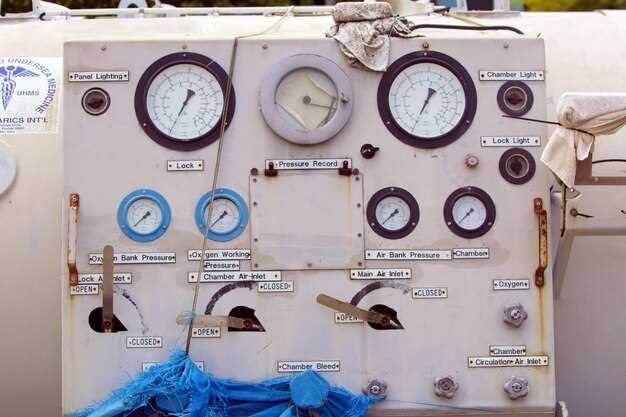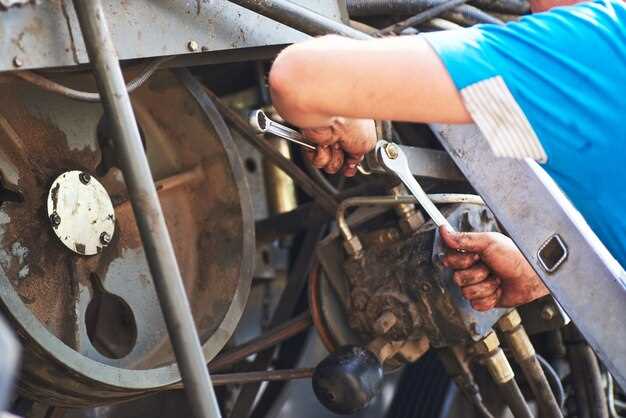Troubleshooting overheating in boat engines

Overheating is a common yet critical issue faced by many boat owners, particularly in marine environments where reliability is paramount. Understanding the root causes of engine overheating is essential for ensuring the safe operation of your vessel and preventing costly repairs. In this guide, we will explore the key factors that can lead to engine temperature complications, providing valuable insights for effective troubleshooting.
The first step in addressing overheating problems is to ascertain whether the issue is related to the cooling system, engine components, or external environmental factors. Marine engines typically rely on various cooling mechanisms, including raw water intakes, heat exchangers, and thermostats. By closely examining these components, you can identify potential malfunctions that may be contributing to increased engine temperatures.
Regular maintenance is a crucial aspect of preventing overheating in boat engines. Neglected engines may develop blockages, wear, or component failure that can lead to overheating. Knowing how to conduct routine checks and repairs not only extends the life of your engine but also enhances your on-water experience. With the right knowledge and tools, you can effectively manage overheating issues, ensuring optimal performance and safety during your marine adventures.
Identifying Common Causes of Engine Overheating

Overheating is a significant concern for any marine engine, as it can lead to severe damage and costly repairs. Properly identifying the root causes is essential for effective troubleshooting. Below are some common issues that can lead to engine overheating.
1. Low Coolant Level: One of the most common causes of overheating is a low coolant level. The coolant is responsible for regulating engine temperature, and insufficient levels can prevent adequate heat dissipation. Regularly check coolant levels and top off as needed.
2. Clogged Sea Strainer: Marine engines rely on seawater for cooling. A clogged sea strainer can restrict water flow, leading to inadequate cooling and eventual overheating. Inspect and clean the strainer regularly to ensure optimal performance.
3. Faulty Water Pump: The water pump circulates coolant through the engine and radiator. If the pump is malfunctioning or damaged, it can result in poor circulation and overheating. Regular maintenance and inspection of the water pump can prevent this issue.
4. Thermostat Malfunction: The thermostat regulates coolant flow based on engine temperature. A malfunctioning thermostat can either stay closed, preventing coolant from entering the engine or remain open, leading to inefficient cooling. Testing and replacing the thermostat as necessary is critical.
5. Blocked Cooling Passages: Over time, debris and corrosion can accumulate in the cooling passages of the engine block, restricting coolant flow. Regular flushing of the cooling system can help prevent blockages and ensure efficient heat transfer.
6. Exhaust System Issues: An obstruction or damage within the exhaust system can prevent the proper expulsion of exhaust gases, increasing engine temperature. Check for blockages or leaks and ensure the exhaust system is functioning correctly.
7. Improper Propeller Size: Using the wrong size or pitch of the propeller can cause the engine to work harder than necessary, leading to overheating. Ensure that the propeller is suitable for your specific boat and engine combination.
Regular maintenance and thorough inspections of your marine engine are crucial for preventing overheating. By being aware of these common causes, boat owners can take proactive measures to keep their engines running smoothly and efficiently.
Step-by-Step Process for Cooling System Inspection

Regular inspection of the cooling system is crucial for preventing overheating in marine engines. Follow these steps to ensure your system operates efficiently.
1. Visual Inspection
Begin by visually inspecting the entire cooling system. Look for any signs of wear, corrosion, or leaks in hoses, clamps, and connections. Pay special attention to the water pump and thermostat housing, as these areas are prone to failure.
2. Check Coolant Levels
Verify the coolant level in the reservoir. Low coolant can lead to overheating issues. If the level is low, inspect for leaks and refill with the appropriate marine coolant.
3. Inspect the Water Pump
Examine the water pump for functionality. Remove any debris or obstructions blocking the intake. Ensure the impeller is in good condition; replace it if it shows signs of wear or damage.
4. Thermostat Functionality
Test the thermostat to ensure it opens at the specified temperature. If the thermostat is stuck closed, it will prevent coolant flow, leading to overheating. Replace it if necessary.
5. Clean the Heat Exchanger
Inspect the heat exchanger for blockages or corrosion. Use a suitable cleaning agent to remove any scale or debris. Ensure water flows freely through the exchanger to dissipate heat effectively.
6. Inspect Hoses and Connections
Check all hoses for abrasions, cracks, or weakness. Replace any damaged hoses to maintain a secure and efficient cooling flow. Ensure all clamps are tight and secure to prevent leaks.
7. Radiator and Exhaust System Check
Examine the radiator and exhaust for any signs of blockage or debris. Clean as needed to ensure proper airflow and cooling. Blocked exhaust systems can cause serious overheating problems.
8. Run the Engine
After completing the inspection and necessary repairs, run the engine. Monitor the temperature gauge closely. If the engine reaches normal operating temperature without overheating, your cooling system is functioning properly.
9. Regular Maintenance
Implement a regular maintenance schedule to consistently check the cooling system. This proactive approach significantly reduces the risk of overheating issues in marine engines.
Repair Techniques for Overheating Problems in Marine Engines
Overheating in marine engines is a critical issue that demands immediate attention to prevent severe damage. Addressing the root causes involves several repair techniques that ensure the engine functions efficiently and safely.
First, verify the engine’s cooling system. Often, overheating stems from insufficient coolant flow due to clogs or leaks in the cooling system. Inspect the coolant hoses for cracks, blockages, or kinks that could obstruct the flow. Replacing worn or damaged hoses is essential for restoring proper circulation.
Another common culprit is the water pump, which circulates coolant throughout the engine. If the pump is malfunctioning, it can lead to overheating. Regularly check the water pump for signs of wear or failure, and replace it if necessary. Ensuring that the pump’s impeller is in good condition is also crucial, as a damaged impeller can significantly reduce flow rates.
Next, examine the thermostat, which regulates the engine’s temperature. A stuck or failed thermostat can cause coolant to remain too long in the engine, leading to overheating. Testing the thermostat for proper operation and replacing it when it no longer functions correctly will help maintain optimal engine temperatures.
Additionally, ensure that the engine’s radiator is clean and free of debris. An obstructed radiator can hinder heat dissipation, leading to increased engine temperatures. Cleaning or flushing the radiator to remove rust and scale buildup can significantly improve cooling efficiency.
Lastly, check for any signs of internal leaks or combustion gases entering the cooling system, as these can also contribute to overheating. Conducting a thorough inspection and performing necessary repairs will help maintain engine integrity and performance.
By utilizing these repair techniques, boat owners can effectively manage and resolve overheating issues in marine engines, ensuring a safe and enjoyable boating experience.




